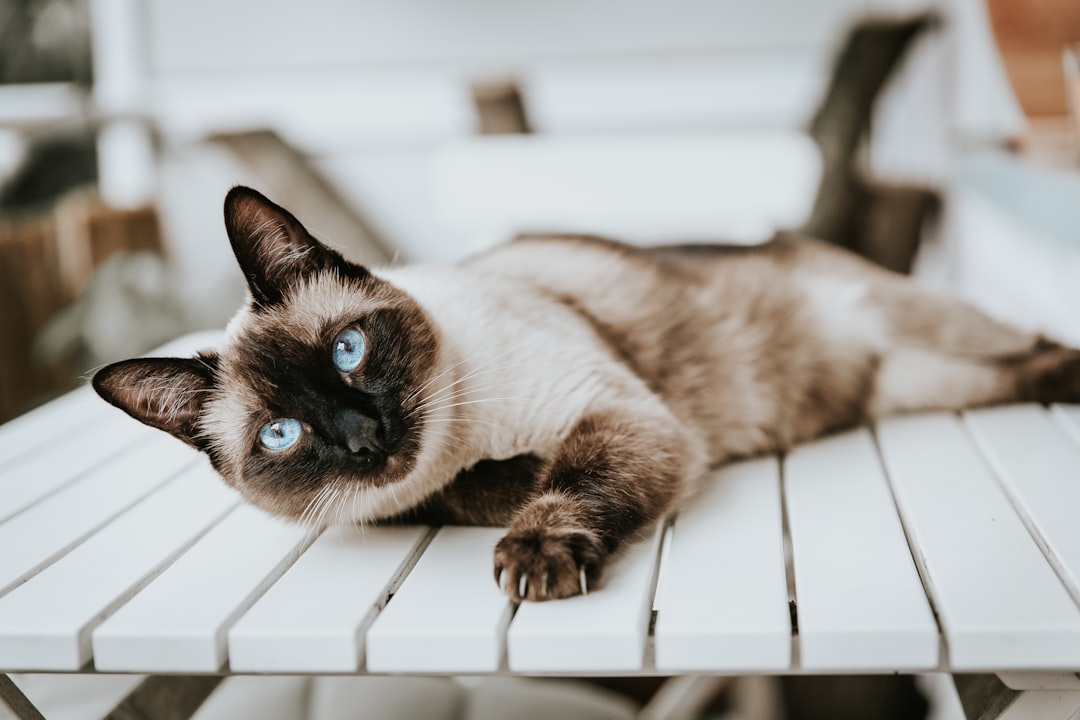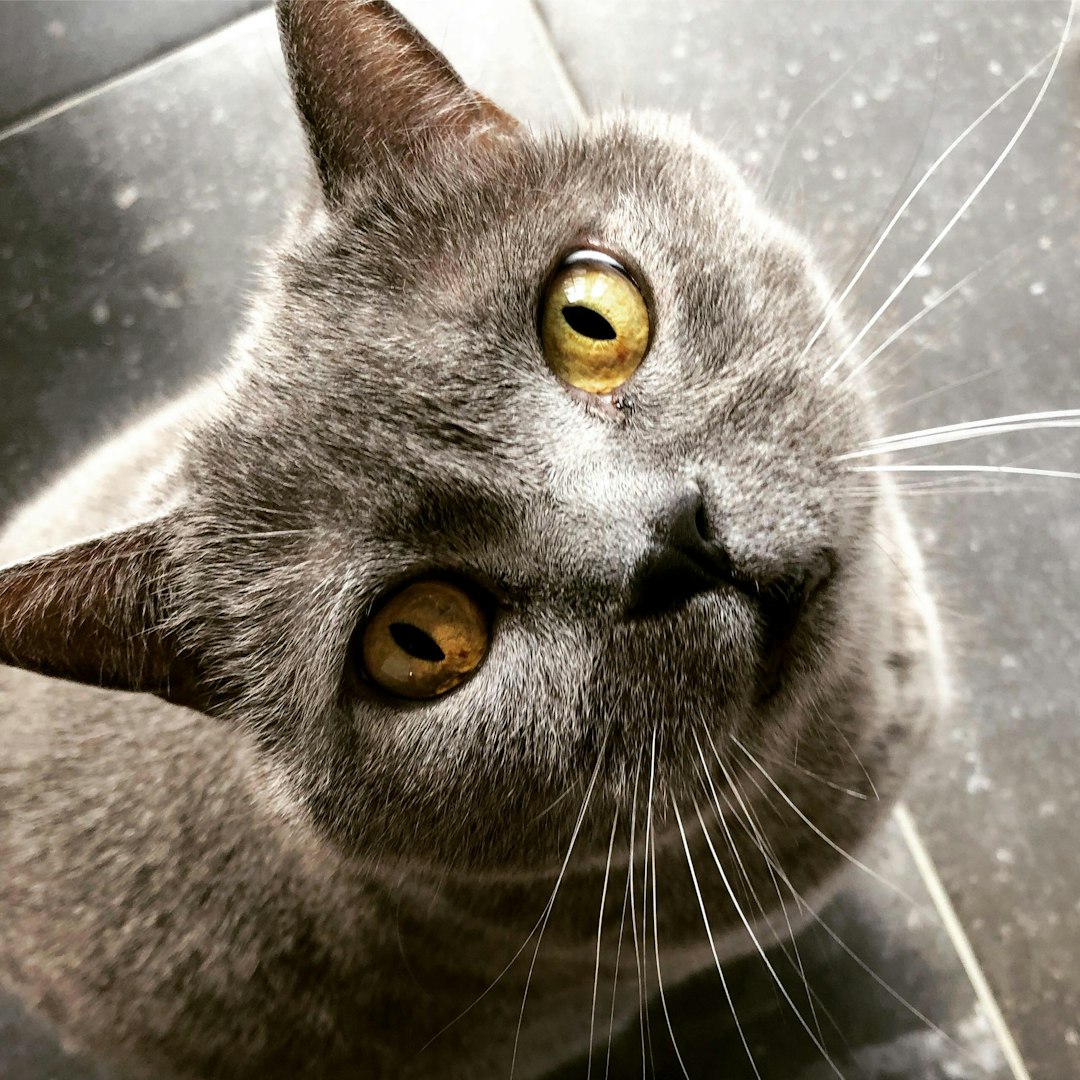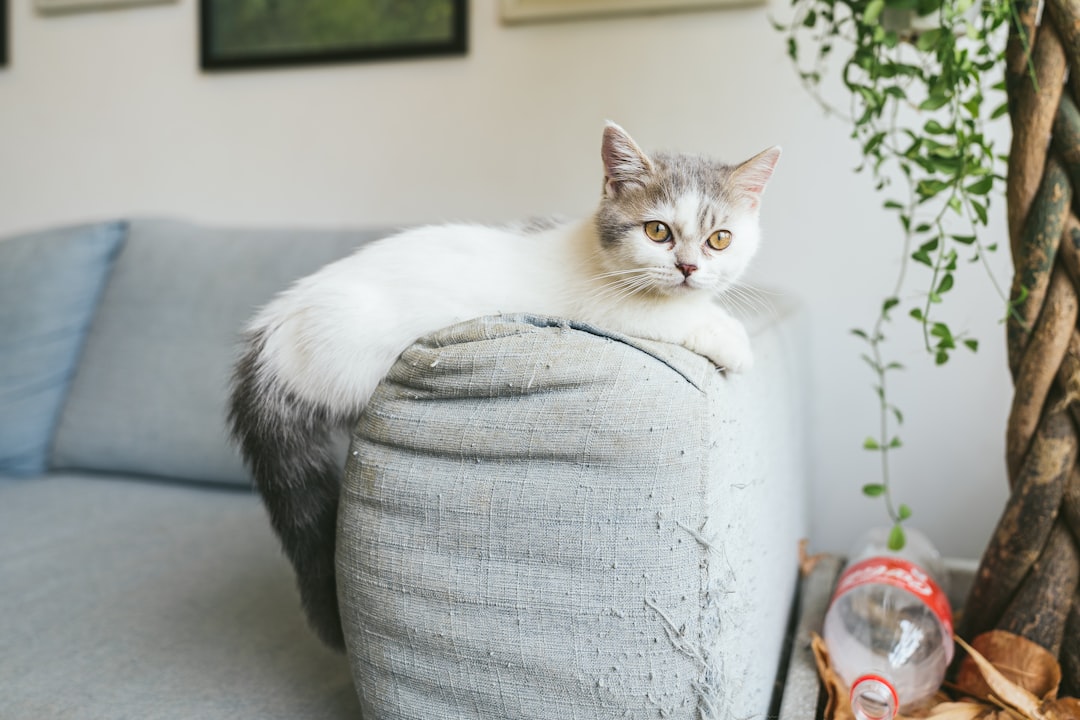Understanding your cat’s behavior is essential for any feline owner, especially when it comes to the complexities of their reproductive cycles. During certain times, your cat may display unusual behaviors, indicating that she is in heat. Recognizing these signals can help you provide the necessary care and support. In this blog post, we will explore the Signs a cat is in heat, guiding you through the nuances of feline reproductive behaviors. From typical behavioral changes to physical signs and the impact on relationships with other pets, we will cover everything you need to know about managing your cat during this natural phase. Additionally, we’ll examine health considerations, the influence of breed, and how to prevent future heat cycles. Armed with this knowledge, you can nurture a supportive environment for your furry companion.
Understanding the Feline Heat Cycle
What is the Estrous Cycle?
The feline estrous cycle, commonly known as the heat cycle, is a period in which a female cat becomes receptive to mating. This cycle is critical for reproduction and is characterized by hormonal changes that increase the cat’s desire to mate. It’s essential to note that unlike humans, cats are induced ovulators, which means ovulation occurs only after mating.
Duration and Phases of Heat
The heat cycle varies in duration but typically lasts between 1-3 weeks. It consists of several distinct phases:
| Phase | Description | Duration |
|---|---|---|
| Proestrus | Initial phase with hormonal changes, but no mating behavior | 1-2 days |
| Estrus (Heat) | The active phase when the cat is receptive to males | 4-10 days |
| Metestrus | The period following estrus where the cat may be pregnant or may enter a pseudopregnancy | Variable, usually several weeks |
| Anestrus | A dormant phase occurring when the cat is not in heat | Variable, often influenced by seasonality |
Factors Affecting Heat Cycles
Several factors can influence the timing and frequency of a cat’s heat cycles, including:
- Age: Younger cats reach maturity faster, leading to more frequent cycles.
- Light Exposure: Increased daylight can trigger heat cycles, causing seasonal patterns in some breeds.
- Health Status: Overall health and nutrition also play significant roles in reproductive cycles.
Recognizing the signs a cat is in heat is essential for responsible pet ownership, as it helps you understand your cat’s needs better during this natural yet complex phase.
Common Signs of a Cat in Heat
Recognizing the signs a cat is in heat is essential for pet owners to ensure their feline friend’s well-being. Let’s delve into some common indicators of this reproductive phase.
Vocalizations and Yowling
One of the most noticeable signs is the significant increase in vocal sounds. Cats in heat frequently unleash loud yowls and persistent meowing. This change in vocalization is often meant to attract potential mates. Here’s a brief overview:
| Vocalization Signs | Description |
|---|---|
| Loud Meowing | Cats may vocalize loudly, more than usual. |
| Yowling | Prolonged and mournful sounds can be common. |
| Repetitive Calls | A series of calls indicating urgency and attention. |
Increased Affection and Attention-Seeking
Cats in heat become exceedingly affectionate, seeking much more attention from their owners. They may rub against you or demand petting frequently. This behavior is rooted in their instinct to attract a mate. Key characteristics include:
- Purring: Cats may purr loudly while seeking closeness.
- Kneading: Cats might knead on soft surfaces as a way to show affection.
Restlessness and Agitation
A notable increase in restlessness often accompanies the heat cycle. This can manifest as your cat pacing around the house or appearing agitated. Common behaviors include:
| Restlessness Indicators | Explanatory Notes |
|---|---|
| Pacing | Cats often walk with purpose, back and forth. |
| Increased Grooming | Cats may groom themselves excessively during this time. |
Understanding these signs a cat is in heat will help you provide comfort and care for your furry companion. By recognizing these behaviors, you can manage her needs more effectively during this phase.
Behavioral Changes in Cats During Heat
Understanding the behavioral changes that cats experience during their heat cycle is essential for pet owners. These modifications can often be surprising and may lead to confusion. Below are key behaviors to look for.
Marking Territory with Urine
One prominent behavior during a cat’s heat cycle is the tendency to mark territory with urine. This instinct is driven by hormonal changes, signaling their readiness to mate. Female cats often spray urine in various locations to attract male counterparts.
| Behavior | Details |
|---|---|
| Frequency of Marking | Increased, often more than once a day |
| Location | Common areas include doorways, walls, and furniture |
| Urine Odor | Unpleasant and stronger than usual due to pheromones |
Excessive Grooming and Licking
During heat, many cats will display obsessive grooming behaviors. While grooming is a natural part of their behavior, an increase in these actions can signal hormonal changes. This excessive grooming may also be a self-soothing mechanism to cope with discomfort.
| Behavior | Details |
|---|---|
| Grooming Duration | Longer sessions of licking and cleaning |
| Focus Areas | Abdomen and genital areas may receive more attention |
| Physical Signs | Redness or swelling in the genital area may be visible |
Seeking Out Mates
Perhaps the most noticeable behavioral change is a cat’s urgent desire to mate. Cats will often vocalize more, displaying behaviors such as loud yowling or meowing to attract males. Additionally, they may adopt specific mating postures when near other felines.
| Behavior | Details |
|---|---|
| Vocalization | Increased volume and frequency of calls |
| Posture | Lordosis posture (arched back and lowered front) |
| Restlessness | Anxious behavior and inability to settle in one spot |
Recognizing these signs a cat is in heat is crucial for both the health of the feline and the harmony within the household. Understanding these behaviors can help mitigate challenges and prepare owners for the complexities of a cat’s reproductive cycle.
Physical Signs of a Cat in Heat
Recognizing the signs a cat is in heat often involves observing specific physical changes that are more pronounced during this reproductive phase. Here are some key indicators to watch for:
Posture Changes and Lordosis
During heat, cats frequently exhibit noticeable posture changes. One of the primary signs is lordosis, where a cat arches her back and raises her hindquarters when approached. This behavior is often accompanied by a series of vocalizations and attempts to attract potential mates.
| Posture | Description |
|---|---|
| Lordosis | Arched back, raised rear when stroked or approached |
| Kneading | Pushing paws into soft surfaces, resembling nursing |
Increased Tail Positioning
Another clear indicator is the increased tail positioning. A cat in heat will often raise her tail higher, revealing her genital area, which is a signal to male cats nearby. This behavior can also be combined with rolling on the floor or rubbing against objects to spread her scent.
| Tail Position | Significance |
|---|---|
| Elevated Tail | Indicates readiness to mate |
| Lateral Movement | Attracting male cats by showcasing scent |
Changes in Eating Habits
During this phase, you may also notice changes in your cat’s eating habits. Some cats may show decreased appetite, while others might eat more due to heightened energy levels and restlessness. This fluctuation is a natural response to the hormonal changes occurring in her body.
| Eating Behavior | Possible Changes |
|---|---|
| Decreased Appetite | Less interest in food, more focused on mating |
| Increased Appetite | Higher energy demands leading to increased food intake |
Understanding these signs a cat is in heat allows you to better care for your feline friend during this natural, albeit challenging, stage of their reproductive cycle. By being observant, you can ensure she receives the attention and support she needs during this time.
How Feline Heat Affects Relationships with Other Pets
Behavior Towards Other Cats
When a cat is in heat, her behavior significantly changes, impacting her interactions with other feline companions. The most notable change includes increased vocalization, often resulting in loud yowling that can attract male cats from afar. Additionally, she may exhibit more territorial behavior, such as marking her space with urine. Other female cats may respond with aggression or avoidance, while male cats might show intense interest, leading to potential confrontations in multi-cat households.
| Behavioral Change | Cat A | Cat B |
|---|---|---|
| Increased Yowling | Yes | N/A |
| Marking Territory | Yes | Possible Aggression |
| Male Attraction | Strong | Intense Avoidance or Interest |
Impact on Dogs in the Household
The presence of a cat in heat can also affect dogs in the home. Dogs are often drawn to the scent of a female cat in heat, leading to heightened curiosity or excitement. This can result in behaviors such as increased barking or attempts to access the cat. In some cases, this dynamic may create stress or conflict, especially if the dog perceives the attention given to the cat as competition.
Managing Multi-Pet Households
Successfully managing a multi-pet environment during this time is crucial. Here are some effective strategies:
- Separate Spaces: Create separate areas for the cat in heat to reduce disturbances.
- Distraction Techniques: Engage pets in playtime or provide toys to minimize focus on the cat in heat.
- Supervised Interaction: Monitor interactions between pets to prevent aggression resulting from jealousy or territorial disputes.
By understanding signs a cat is in heat and their effects on relationships with other pets, you can take proactive steps to ensure harmony in your household during this transitional period.
The Role of Breeds in Heat Symptoms
Differences Among Breeds
Understanding the signs a cat is in heat can vary significantly among different breeds. Generally, esoteric breeds like the Siamese and Burmese may display more intense heat behaviors than more reserved breeds like the British Shorthair. The intensity and frequency of these behaviors can be influenced by genetic predispositions, making it essential to recognize breed-specific characteristics.
| Breed | Heat Behavior Intensity | Vocalization Frequency | Affection Levels |
|---|---|---|---|
| Siamese | High | Very High | High |
| British Shorthair | Moderate | Moderate | Low |
| Persian | Low | Low | Moderate |
Purebreds vs. Mixed Breeds
Purebreds often exhibit more predictable patterns during their heat cycles, potentially due to selective breeding for specific traits. In contrast, mixed breeds may display a wider variation in behaviors. For example, a purebred Ragdoll may show distinct signs of affection during heat, while a mixed breed may not, making it useful to consider the origin and lineage of your cat when evaluating heat symptoms.
Genetic Factors Influencing Heat Behavior
Several genetic factors can influence the intensity and manifestation of heat behaviors. Some breeds have been selectively bred for vociferous mating calls and playful attitudes during heat. Others might be more subtle. Thus, understanding these genetic factors not only helps in recognizing the signs a cat is in heat but also allows for better management strategies.
In essence, being aware of the breed characteristics can streamline your approach to handling a cat in heat, enhancing both your understanding and care for your feline friend.
Health Considerations During Heat
Potential for Unplanned Pregnancies
When a cat is in heat, the signs a cat is in heat become increasingly pronounced, and this heightened state of receptivity to mating can lead to unplanned pregnancies. Female cats that have not been spayed are often sought after by male cats, raising the probability of mating. Pet owners must remain vigilant during this phase to prevent any unexpected litters, especially if they have other unaltered males around.
Health Risks if Not Spayed
Failing to spay a cat can lead to several health complications during her heat cycle. Here are some key points to think about:
| Health Risk | Description |
|---|---|
| Increased Risk of Infection | Cats in heat may develop pyometra, a severe uterine infection that can be fatal. |
| Hormonal Imbalances | Ongoing heat cycles can trigger issues like false pregnancies or serious hormonal imbalances. |
| Fertility Concerns | Repeated heat cycles can lower overall fertility if the cat has unmonitored matings. |
Behavioral Health Stressors
During heat, cats often exhibit heightened anxiety and restlessness. Behavioral changes can include excessive vocalization, scratching, and attempts to escape the home. This stress not only affects the cat but can create tension in multi-pet households. Owners should consider providing:
- Safe Spaces: Secure areas where the cat feels comfortable.
- Interactive Playtime: Engaging toys and activities can help redirect excess energy.
- Pheromone Diffusers: Products designed to calm anxiety can be helpful during this sensitive phase.
Comprehending these health considerations is essential for maintaining a happy and healthy feline companion.
Managing a Cat in Heat
Environmental Enrichment Strategies
Effectively managing a cat in heat involves providing a stimulating environment. Engaging activities and interactive toys can help distract a cat from her instincts. Consider incorporating the following strategies:
| Strategy | Description |
|---|---|
| Cat Trees | Provide vertical spaces for climbing and surveying. |
| Puzzle Feeders | Encourage mental stimulation and occupy her time. |
| Interactive Toys | Use toys that mimic prey behavior to keep her engaged. |
Calming Techniques and Products
During this challenging time, it’s important to promote a calm environment. Certain techniques may help soothe your feline friend:
- Feromone Diffusers: These products can release calming pheromones that reduce stress.
- Soft Music or White Noise: Serene sounds can help mask outside distractions that heighten her anxiety.
- Gentle Play: Engage in quiet play to nurture bonding without overstimulation.
When to Consult a Veterinarian
While many signs of heat are natural, there are instances when consulting a veterinarian is advisable. Keep an eye out for these issues:
| Symptoms | Action Required |
|---|---|
| Excessive vocalization | May indicate distress or illness. |
| Lethargy or appetite loss | Could signal an underlying health concern. |
| Prolonged heat cycles | A vet can provide solutions or treatments. |
Understanding the nuances of managing a cat in heat is essential for both her wellbeing and the harmony of your household.
Preventing Heat Cycles in Cats
Benefits of Spaying Neutering
One of the most effective ways to prevent heat cycles in cats is through spaying or neutering. This surgical procedure not only eliminates the risk of unwanted litters but also significantly decreases the likelihood of certain health issues, including mammary tumors and uterine infections in females. Additionally, neutered males are less likely to engage in territorial marking and aggressive behaviors. Keeping your cat sterilized contributes to a healthier, more stable environment for both your pet and your family.
Timing of Spay Surgery
Timing is critical when considering spaying or neutering your feline friend. Ideally, this procedure should occur before your cat reaches sexual maturity, which typically happens around 5 to 6 months of age. Performing the surgery at this young age can lead to safer recovery and can effectively prevent the onset of heat cycles. Here’s a simple table summarizing recommended spay/neuter ages:
| Age Range | Procedure | Benefits |
|---|---|---|
| 2-3 months | Spay/Neuter | Allows early behavioral prevention |
| 4-6 months | Spay/Neuter | Reduces health risks |
| 7+ months | Spay/Neuter | Targets mature behavioral issues |
Understanding the Myths
Despite the clear benefits of spaying or neutering, several myths persist regarding these procedures. A common misconception is that cats will become overweight after spaying or neutering; however, weight management is primarily dependent on their diet and exercise. Another myth is that it alters a cat’s personality. In reality, it often leads to a calmer demeanor, making them more affectionate. By debunking these myths, pet owners can make more informed decisions about their cats’ reproductive health and overall well-being.
By understanding and addressing these factors, cat owners can effectively manage and prevent heat cycles, ensuring a healthier and happier life for their feline companions.
What to Expect Beyond the Heat Cycle
Post-Heat Behavior
After a cat has gone through a heat cycle, certain behavioral changes may still persist. It’s common for cats to exhibit a calming behavior once they are out of heat, but it can take a few days for her routine to return to normal. Some cats may exhibit affectionate behavior or remain vocal as they decompress. This transition period can vary based on individual temperament and the frequency of heat cycles experienced.
Preparing for Future Heat Cycles
Understanding that a cat might enter a new heat cycle approximately every 2 to 3 weeks during breeding season is crucial for pet owners. To prepare effectively, consider:
| Preparation Aspect | Description |
|---|---|
| Monitoring Signs | Keep a keen eye on behavioral and physical changes. |
| Scheduling Vet Visits | Regular check-ups are essential, especially if considering spaying. |
| Creating Safe Spaces | Offer areas where your cat can feel secure during any future heats. |
Long-Term Care for Unspayed Cats
For owners who choose not to spay their cats, long-term care becomes critical. Long-term considerations include:
- Health Monitoring: Regular check-ups are vital to catch any health issues early.
- Behavioral Management: Unspayed cats might show persistent mating behaviors, so managing this can help maintain household harmony.
- Nutritional Needs: Providing a well-balanced diet supports overall health during heat cycles.
By keeping these factors in mind, cat owners can create a harmonious and healthy environment for their feline companions, even beyond the signs a cat is in heat.
Frequently Asked Questions
What are the primary signs that indicate a cat is in heat?
When a cat is in heat, several notable behaviors may arise. These include increased vocalization, often referred to as yowling, as cats communicate their availability to potential mates. Additionally, cats may exhibit affectionate behaviors, such as rubbing against furniture or their owners, and may even roll on the floor in a display of receptiveness. A noticeable change in posture, where they raise their hindquarters and arch their back, is also a common indication. Lastly, a cat may start marking their territory with urine to signal their reproductive status.
How long does a cat stay in heat?
The heat cycle in cats, scientifically known as estrus, typically lasts around 7 to 10 days, but it can vary based on individual conditions. If the cat does not mate during this period, she may enter another heat cycle within a few weeks. It’s important to note that the frequency of these cycles can increase if the cat is not spayed, leading to multiple cycles throughout the breeding season, which varies based on factors like lighting and the cat’s overall health.
Are there any behavioral changes I should be aware of during my cat’s heat cycle?
Yes, during a cat’s heat cycle, you may observe several significant behavioral changes. These can include increased affectionate behaviors toward you and other pets, heightened restlessness, and a desperate search for an escape route to find a mate. Additionally, some cats may engage in excessive grooming or show signs of irritability. It’s crucial to monitor your cat’s behavior closely, as these changes can affect their mood and interactions.
How can I help my cat during her heat cycle?
Supporting your cat during her heat cycle can involve several strategies. Providing a quiet, comfortable space can help alleviate her restlessness. Engaging her in play can divert her energy and help reduce stress. It’s also important to ensure she has access to her litter box and food, as her appetite may change. If her behavior becomes overwhelming or if you have concerns, consulting a veterinarian about spaying may be a worthwhile consideration, as it prevents future heat cycles and related behaviors.
What are the health risks associated with a cat being in heat?
While being in heat is a natural physiological state, there are health risks associated with unspayed females. Cats in heat are more prone to experiencing unwanted pregnancies, which can lead to overpopulation. Additionally, the likelihood of certain health issues, such as pyometra (a life-threatening uterine infection), increases if a cat is not spayed. Furthermore, the stress of mating behaviors can lead to anxiety and changes in overall health. Therefore, consulting with a veterinarian can help ensure your cat’s health and well-being.



